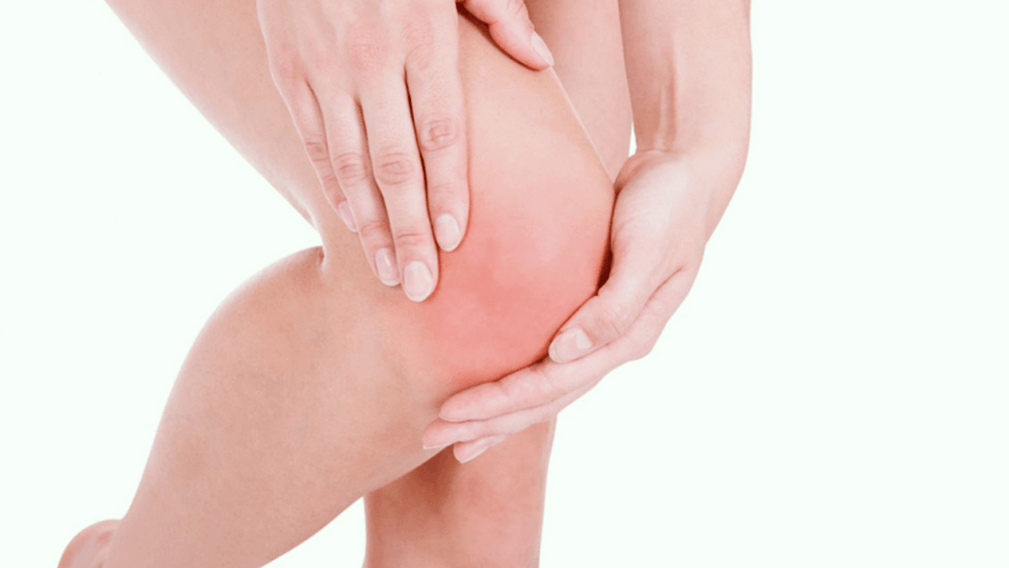With age, the tissue of cartilage of different joints is gradually worsening, which is accompanied by destroying only common capsules and elements surrounding it. The osteoarthritis of the knee joint (also gonartrosis) is called the degeneration of the cartilage knees.At first, the disease is accompanied by pain, which can later lead to significant restrictions on movement, and even disability.
The osteoarthritis of the knee joint (also gonartrosis) is called the degeneration of the cartilage knees.At first, the disease is accompanied by pain, which can later lead to significant restrictions on movement, and even disability.
Symptoms of the knee arthrosis
The main symptom of arthrosis is rare, regular, or continuous pain in the knee.The most common symptoms are:
- pain when changing position, moving the stairs;
- rest pain;
- stiffness in the knee after sleep - first short time and then up to 30 minutes;
- crushing, sharp sound accompanied by pain;
- Problems with the movement of the knee joint, rare - the inability to bend the knee;
- Visual deformation of the knee joint;
- swelling of nearby skin;
- chromost (characteristic of an advanced phase symptom).
4 degree of pathology
The event manifestation is largely dependent on the disease development phase.For example, during the first phase, the patient may not feel pain, but in the phase 4 pathology is pronounced pain, and movements are very difficult.The development of pathology is divided into 4 degrees:
- The first is that there is no symptoms as such, but during X-Rays, the doctor can reveal minor deviations from the normal condition.
- The second episodic pain is generally noticed during physical activity, while changing position, squats, or move the stairs.
- Third, the pain is serious and appears constantly, even at rest.In this case, walking is possible only with the use of reed.Rendgend reveals a significant narrowing of common space, meniscus degeneration and bone tissue spread.
- Fourth, the movements in the knee are difficult or even impossible.X-ray shots show full destruction of cartilage, sometimes bones begin to ensure themselves.
Important!Even if you experience casual pain in your knee joint, you should contact your doctor and get X-ray.If the disease is revealed early, the chances of recovery are much larger.
Diagnosis of the disease: Where to go
For the diagnosis, the patient turns to the therapist, and then goes to see an orthopedic, rheumatologist, vertebrate or kinesiotherapest (depending on the direction).Diagnostics involves interviewing, patient testing and performing numerous procedures:
- General analysis of blood and urine;
- X-ray shot;
- Computer Tomography;
- MRI;
- Ultrasound to study common knee capsules, as well as adjacent structures - muscular tissue, tendons;
- Joint breakthroughs (collection of analysis fluid);
- Arthroscopy (Loading a small camera in a composition diagnosis).
Treatment Arthrosis Knee joint
The course of treatment prescribes a doctor.If the disease is not advanced, conservative therapy (without surgery) can be used.In this case, medications and physiotherapy procedures are indicated.As a rule, treatment is complex - the patient will use drugs from different groups:
- Non-steroidal anti-inflammatory drugs for pain relief - Diclofenak, ibuprofen and medications based on them;
- Hormonal medicines (corticosteroid group) - are used in the event of inefficiency of other drugs;
- Antispasodik - "Tolperosone" and his analogues;
- Chondroprotektori - medications that encourage the process of renewal of cartilage tissue: "Chondroitin sulfate", "glucosamine" in combination and separate;
- Drugs that encourage blood saturation with oxygen, nutrients and improving blood flow ("pentoksilline", "nicotinic acid" and others).
Medications are used in various forms - exterior (fats, gels), oral (tablets), intramuscular and intraarticular (injections).With medicines, if necessary, the doctor may prescribe the following procedures:
- shock therapy;
- Magnetic therapy;
- Laser therapy;
- Electrotherapy;
- phonoporesis;
- Ozone therapy.
In extreme cases, when the use of drugs and procedures does not give a long desired effect, and also if the disease is very advanced, treatment is possible only by surgery.Several types of operations are possible:
- Osteotomy - a surgeon cut one bone, changes its angle to reduce the total load on the knee joint;
- Arthodesis - In this case, the doctor attaches bones in this case, which eliminates mobility and reduces pain, as a result whose person can lean on the leg;
- EndoProsthetics - Total replacement of the affected joint with prosthesis.



















